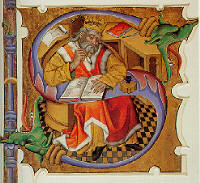
Ken Pennington Due: December 21, 1998.

1. Describe the establishment of the Ius commune as an educational system and as a pan-European legal system.
2. As the Ius commune became central in European legal thought, the jurists who studied it were forced to examine how legislation could be established and what the relationship between law, rulers, and the ruled was. Using the first twenty distinctions of his Decretum describe Gratian=s first attempt to formulate a doctrine of law and legislative authority in the Ius commune. Outline the progress of legislative doctrine from "all law is custom" to "all law resides in legislative institutions." Discuss the practice of legislation in twelfth-century England and compare English practice to Gratian's theory.
3. Modes of proof took two different roads after 1100. As ordeals became more suspect and then obsolete after 1215, one road followed the procedure of Roman law, the "Ordo iudiciarius," the other developed modes of proofs based on Germanic conceptions and practices. Discuss the reasons why two different systems of proof were instituted in European legal systems.
4. Discuss how jurists in the medieval and early modern periods created legal norms and individual rights. Give at least four examples of the norms that they created. Pennington's essays on rights are necessary reading for this question!
5. Discuss the three themes of this course, codification and legislation, procedure, and the role of jurists, in modern common and civil law. Point out to what extent the history of law helps us to understand how modern common and civil law evolved.
Write an essay covering each of these points. It should be typed, double-spaced, and proofread. The margins of the esaay should be one inch on each side and the font size should be 12 point. Be sure to paginate the final typescript. In the essay, each new section should have a number corresponding to the above sections.